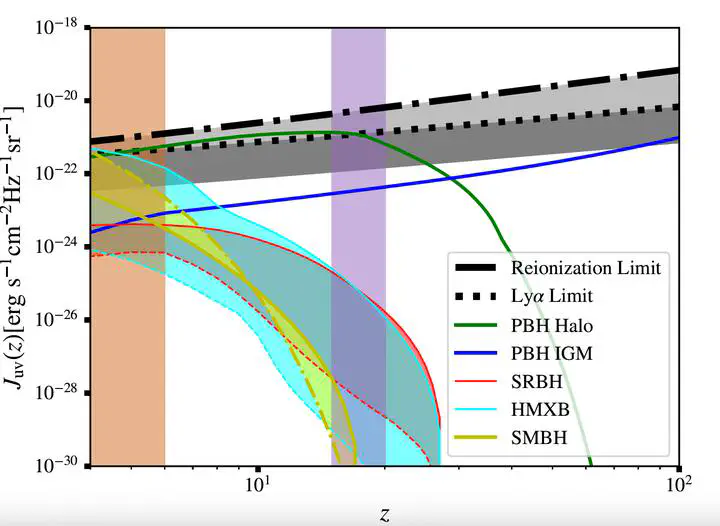Distinguishing the impact and signature of black holes from different origins in early cosmic history
 Radiation Background from Black Holes or various origin
Radiation Background from Black Holes or various originWe semi-analytically model the effects of primordial black hole (PBH) accretion on the cosmic radiation background during the epoch of reionization ($z>6$). PBHs in the intergalactic medium (IGM) and haloes, where star formation can occur, are considered. For stars with a mass $> 25 \ M_{\odot}$, formed in suitable host haloes, we assume they quickly burn out and form stellar remnant black holes (SRBHs). These SRBHs, like PBHs, also accrete material, and are considered to have similar radiation feedback in the halo environment. To improve the background radiation estimation, we consider the impact of PBHs on structure formation, allowing a modified halo mass function. We consider the radiation feedback from a broad suite of black holes: PBHs, SRBHs, high-mass X-ray binaries (HMXBs), and supermassive black holes (SMBHs). The result shows that at $z> 30$, the radiation background energy density is generated by PBHs accreting in the IGM, whereas at lower redshifts, halo accretion dominates. We also dissect the total power density by modeling the accretion spectral energy distribution (SED) across different wavebands. In the UV band, we find that for $f_{PBH} < 10^{-3}$, the H-ionizing and Lyman-$\alpha$ fluxes from PBH accretion feedback do not violate existing constraints on the timing of reionization, and on the effective Wouthuysen-Field coupling of the 21-cm spin temperature of neutral hydrogen to the IGM kinetic temperature. However, in the X-ray band, with the same abundance, PBHs contribute significantly and could explain the unresolved part of the cosmic X-ray background.
Add the publication’s full text or supplementary notes here. You can use rich formatting such as including code, math, and images.